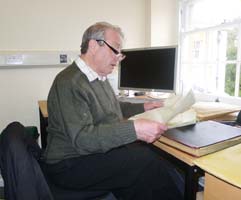
Cyril Hazard revolutionized quasar observation and his work allowed other astronomers to find redshifts from the emission lines from other radio sources. The first quasars were discovered with radio telescopes in the late 1950s. Many were recorded as radio sources with no corresponding visible object. Using small telescopes and the Lovell Telescope as an interferometer, they were shown to have a very small angular size. Hundreds of these objects were recorded by 1960 and published in the Third Cambridge Catalogue as astronomers scanned the skies for the optical counterparts. In 1960, radio source 3C 48 was finally tied to an optical object. Astronomers detected what appeared to be a faint blue star at the location of the radio source and obtained its spectrum. Containing many unknown broad emission lines, the anomalous spectrum defied interpretation — a claim by John Bolton of a large redshift was not generally accepted. In 1962 a breakthrough was achieved. Another radio source, 3C 273, was predicted to undergo five occultations by the moon. Measurements taken by Cyril Hazard and John Bolton during one of the occultations using the Parkes Radio Telescope allowed Maarten Schmidt to optically identify the object and obtain an optical spectrum using the 200-inch Hale Telescope on Mount Palomar. This spectrum revealed the same strange emission lines. Schmidt realized that these were actually spectral lines of hydrogen redshifted at the rate of 15.8 percent. This discovery showed that 3C 273 was receding at a rate of 47,000 km/s.